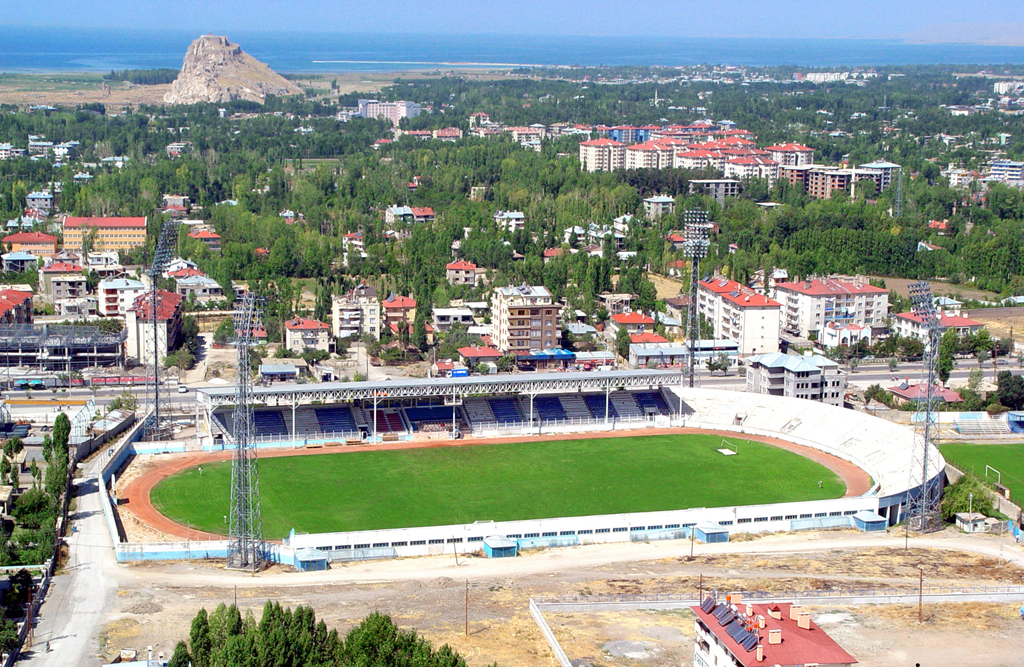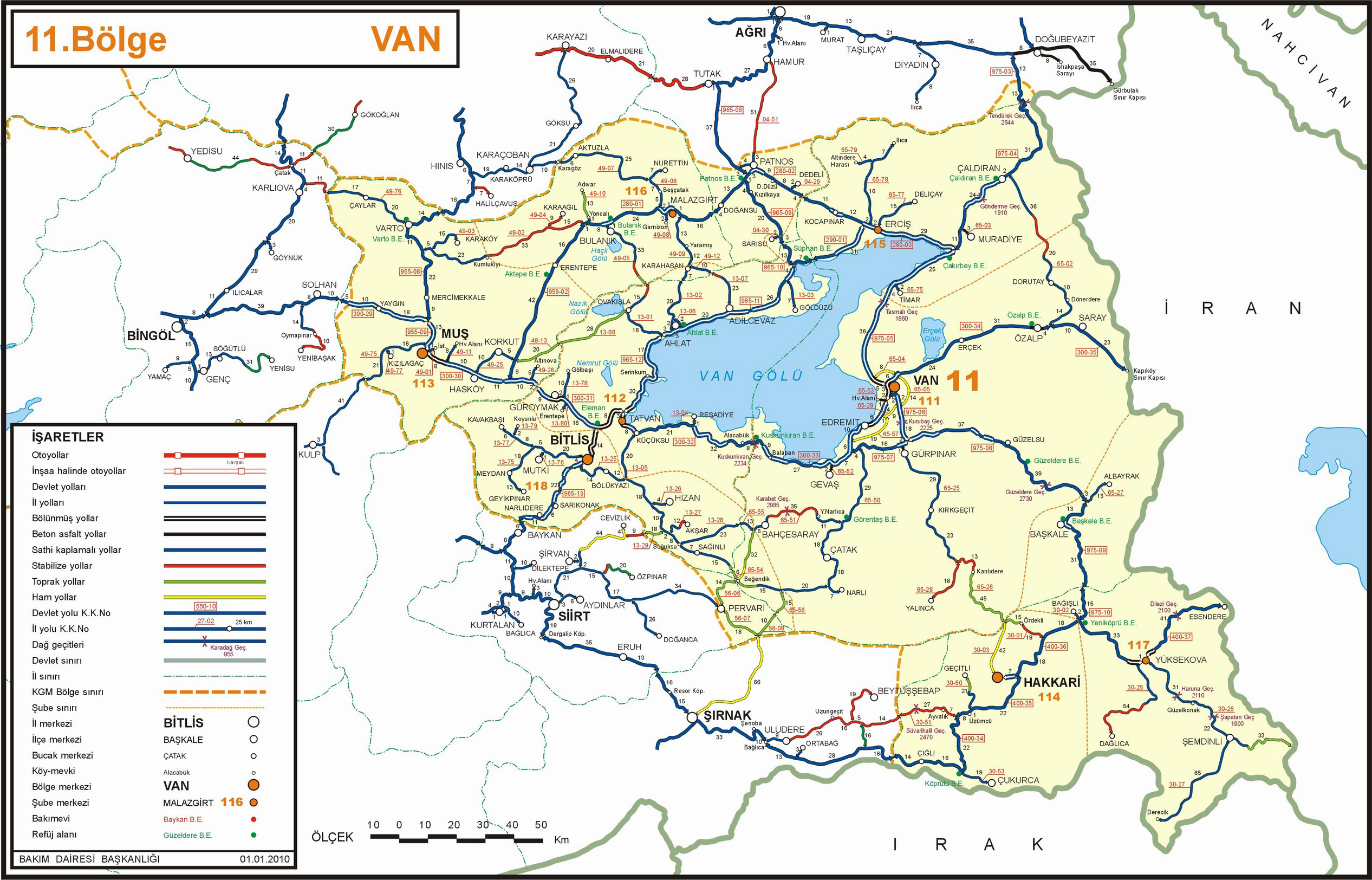The province covers an area of 19,069 square kilometers, making up 2.5% of Turkey's territory. Van is the 6th largest province in Turkey in terms of area. It is located on a gently sloping terrain, approximately 5 kilometers from the eastern shore of Lake Van, in the hollow region covered with volcanic mountains in the Eastern Anatolia region. The elevation is approximately 1,725 meters.
Lake Van, the largest lake in Turkey, is a depression surrounded by high mountains. These surrounding high mountains form the boundaries of Van province.

The province of Van is bordered to the north by the province of Ağrı and the districts of Doğubeyazıt, Diyadin, and Hamur; to the west by Lake Van and the district of Patnos in Ağrı province, as well as the districts of Adilcevaz, Tatvan, and Hizan in Bitlis province; to the south by the district of Pervari in Siirt province, Hakkari province, and the districts of Beytüşebap and Yüksekova. To the east lies the state of Iran.
Like all other provinces in the Eastern Anatolia region, Van has significant potential in terms of history, nature, culture, and winter tourism. In addition to these, Van also has the potential for marine tourism, which, with suitable investments, could host a wide range of tourism activities throughout all four seasons.
With this awareness, the Van Governorship Tourism Council’s Tourism Inventory Commission has begun to compile an inventory of the province’s cultural and natural assets. The list of cultural and natural values within the provincial borders, planned to be updated, is as follows:

ORIGIN OF THE NAME "VAN"
Although the origin and source of the name "Van" have not yet been fully clarified, some important views on the subject are as follows:
Although the origin and source of the name "Van" have not yet been fully clarified, some important views on the subject are as follows:
In his travel book Seyahatname, Evliya Çelebi states that Alexander the Great named the city after a temple called Vank located in Van Castle.
According to another legend, Van is an ancient city, and around 1900 B.C., it was named Şahmerimekerd in honor of Queen Meshure Sah Meryem (Semiramis) of Assyria. Later, during the final period of Küyanyâ, the city was expanded and beautified by a governor named Van, and since then, it has been called Van.
The most plausible and scientific view regarding the origin of the name Van is that it derives from the Urartian words Biane or Viane. In all historical sources, the Urartians referred to themselves as Bianili. During the rise of the Urartian civilization, many cities and communities named Biate gathered in the Van region.

